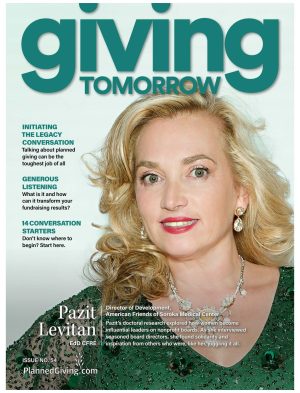The 40-40-20 Rule
An old secret in direct marketing was, “Never, ever forget the 40-40-20 rule!” The Rule dictated that:
- 40% of the success of a direct marketing campaign depends on a solid audience (read: mailing list);
- 40% depends on making the right offer to that audience;
- And just 20% depends on the creativity (copy, graphics, packaging) displayed in presenting the message.
This was the analysis:
- If you have a great list, a hot offer and a creative package, you win!
- Creativity alone won’t make you rich, if 80% of your success depends on list and offer.
- A hot offer won’t make you rich, either, if 60% of your success depends on a solid list and creative presentation.
- And, a great list alone won’t make you rich, if the other 60% of your direct marketing success depends on what you are offering and the creativity you use to present it.
OK, the not-so-secret implication of the 40-40-20 Rule is that you need all three aspects, list, offer, and creative, working in concert.
This calculus applies to any direct marketing campaign, say the experts, whether it’s in print or electronic media. If you do not follow it, your planned giving marketing will fail.
But wait! 40-40-20 or 60-30-10?
I think the time has come to revisit the Rule.
Not the philosophy behind it, but the portion each of the three components contributes to the success of a direct marketing campaign.
It’s my experience that your audience is the single most powerful and most important element in the mix. If your marketing campaign is to get results, whether you use direct mail, print pieces, or e-mail, you must first make certain that the right audience is getting your message. As I see it, finding the right audience determines 60 percent, not 40 percent, of the success of your campaign.
Why? Prospects are bombarded with offers every day; to keep their sanity, they segment themselves into narrow areas of interest and focus only on messages that relate to those areas; they are quick to turn off any message that is outside their “zones.” For instance, Omaha Steaks won’t get much response on catalogs it sends to confirmed vegetarians. Doesn’t matter how good the offers in the catalog are, or how enticingly the meat is photographed – these recipients are just not interested.
By the same theory, someone in your planned giving campaign who has only contributed twice to your organization over the last 10 years is probably not a hot prospect. Doesn’t matter how eloquently you put your case for support – he’s likely not interested in making you part of his family. But someone with a giving history is.
Thus a new ranking of the components: 60-30-10.
- 60% of the success of your direct response marketing program will be selecting the right audience and reaching them with your message.
- 30% of the success of your direct response program will be making the most persuasive case to this select audience.
- 10% of the success of your program will come from a creative, high quality presentation. (In other words, stay away from graphic designers who put creativity over all other components, and give you cutting-edge design with 9-point type for your elderly prospects — magnifying lens not included.)
How Do You Find the Audience?
Well, don’t start with traditional wealth screening tools: the plain, unvarnished truth is that they simply do not work well in planned giving. Wealth screening tools look for stock ownership, real estate, boats and luxury items, board memberships and swanky addresses as indicators of wealth. They are extremely useful as a way to screen for major donors for capital campaigns, but wealth alone has absolutely nothing to do with identifying planned giving donors. In fact, I would argue that it can be a contra-indicator. Similarly, focusing principally on net worth, age, geography or other demographic factors has almost no predictive value.
The one indicator that consistently predicts interest in gift planning is loyalty to your organization. Why? Because only people who are consistently loyal to an organization will be willing to make the organization a member of their family by including them in their wealth transfer plans. Remember, a planned gift is not a gift from income, it is a gift from principal. It is an asset transfer. So, when someone gives up a part of their nest-egg to support your organization, they have made you a part of their family.
Now that’s loyalty.
And here’s our discovery: The best indicator of loyalty is consistent patterns of giving to your annual fund. All other measures of support pale in comparison to the accuracy of consistent annual-fund giving as a predictor of interest in planned giving.
Once this loyalty pattern is identified, other factors – such as demographic information, wealth indicators, long-term volunteering – can be folded back in as additional factors that have incremental value in predicting whether someone is likely to become a planned gift donor. But, these factors only have predictive value when placed against the screen of loyal giving!
Category: Planned Giving Marketing






